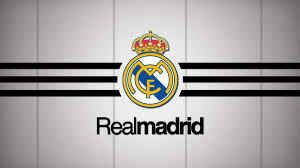
Real Madrid FC
In summary, the historic roots of Real Madrid FC form a tapestry woven with ambition, talent, and a relentless pursuit of greatness. Its origin story is a testament to how a humble club can evolve into an international powerhouse, inspiring generations and defining an era of football excellence 69VN.
The Tactical Evolution and Playing Style Real Madrid FC
Real Madrid FC’s tactical approach has evolved significantly over the years, reflecting changes in football trends, managerial philosophies, and player capabilities. This adaptability has been a key factor behind their sustained success and ability to remain relevant across different eras.
Traditional Attacking Philosophy
Historically, Real Madrid FC has been renowned for its attacking ethos. From the days of Di Stéfano and Puskás to the modern era of high-pressing and swift counterattacks, the club has consistently prioritized offensive football. Their style often emphasizes quick ball movement, creative freedom for forwards, and exploiting spaces defensively.
This attacking mindset has produced some of the most memorable matches and goals in football history. It also aligns with the club’s brand image—glamorous, fearless, and entertaining. Managerial philosophies have continuously adapted to enhance this attacking identity, whether through possession-based tactics or direct play.
Defensive Strategies and Tactical Discipline
While attack has often taken center stage, Real Madrid FC also prides itself on defensive organization. A well-structured backline, strategic pressing, and disciplined midfield shield have been crucial in balancing their play. Managers like Carlo Ancelotti and Zinedine Zidane emphasized defensive stability as a foundation for their attacking plans.
The tactical discipline enables the team to transition quickly from defense to attack, a hallmark of their gameplay. The integration of modern pressing systems and positional play has further refined their defensive resilience without sacrificing offensive potency.
The Influence of Managers
Throughout its history, Real Madrid FC has seen a variety of influential managers who left distinct tactical imprints.
- Santiago Bernabéu prioritized a balanced approach, emphasizing physical fitness and technical skill.
- Miguel Muñoz introduced pragmatic tactics blending attacking football with defensive solidity.
- Vicente del Bosque fostered possession-based strategies aligned with his philosophical outlook.
- Zinedine Zidane adapted flexible formations, leveraging the strengths of star players like Cristiano Ronaldo and Luka Modrić.
Modern managers continue to innovate, utilizing data analytics, advanced training methods, and tactical nuance to stay ahead.
Iconic Formations and Systems
Some formations and systems have become synonymous with Real Madrid FC’s identity:
- The classic 4-3-3 system focusing on width and depth.
- The 4-2-3-1 formation facilitating midfield control and attacking options.
- Variations tailored to specific opponents, such as adapting to high-pressing or counter-attacking styles.
Tactical flexibility remains central to Real Madrid FC’s strategy, allowing them to adapt to different competitions and match scenarios effectively.
Modern Approaches and Future Prospects
In recent years, the club has embraced modern football innovations such as pressing intensity, positional rotation, and advanced video analysis. The current squad’s blend of experienced stars and emerging talents reflects a forward-looking approach rooted in tactical versatility.



